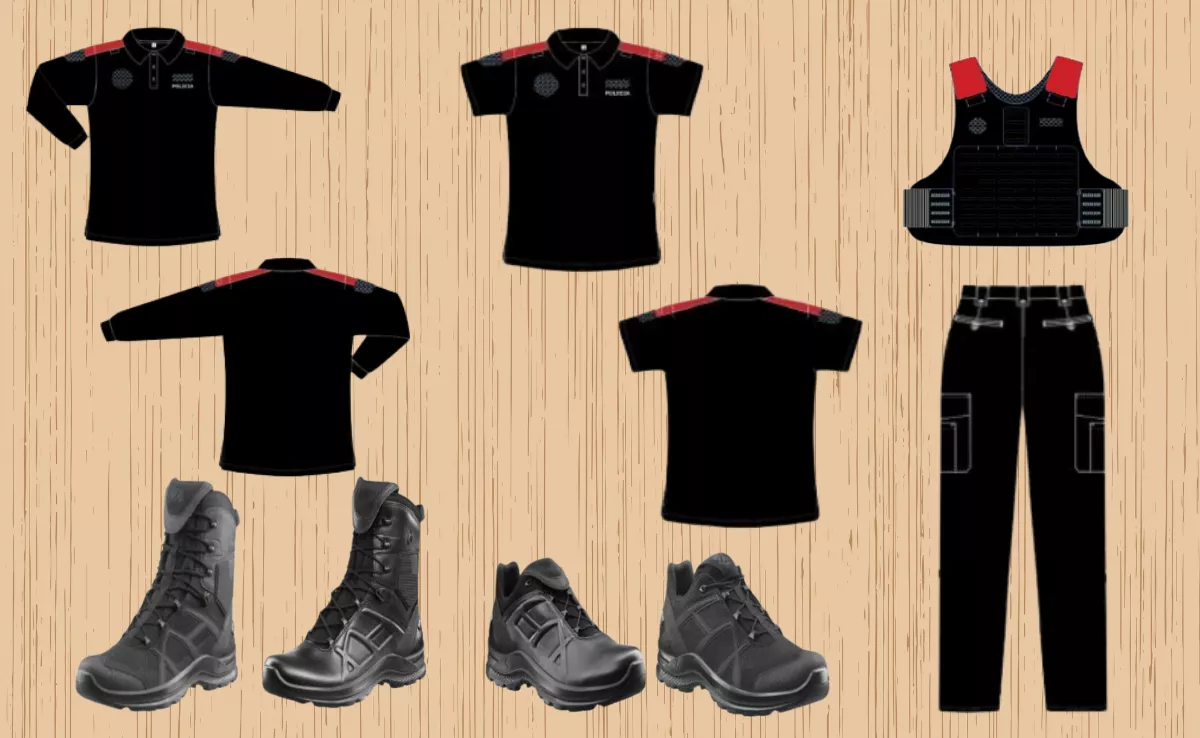
The General Body of the Canary Police will unveil a completely renewed uniform model in the next two years, which goes far beyond just clothing.
The resolution published this Thursday in the Official Bulletin of the Canary Islands meticulously regulates not only what garments the officers of the Canary autonomous police will wear, but also how they must wear them, in what contexts, with what insignia, and with what exceptions.
This new regulatory framework responds to a broader political process: the Canary Government’s plan to strengthen the police force and align it with the competencies, resources, and structure of other autonomous police forces like the Mossos d’Esquadra or the Ertzaintza.
For the first time, the resolution details a coherent and complete uniformity, composed of around 90 different elements: technical clothing, badges, ballistic vests, weapon holsters, credentials, backpacks, and tactical accessories.
The change is not just visual. It signifies an operational transformation in how the police present themselves, act, and organise internally. The uniform is no longer merely a way to recognise an officer on the street; it now embodies a regulated system of functions, hierarchies, and specialisations.
The regulations classify uniforms into four categories: work, representation, gala, and special services. The work uniform is standardised as the usual attire for most services. It is black with red details and allows variations like boots or technical shoes depending on the environment.
The polos include Velcro for emblems, loops for microphones, and standardised typography featuring the legend “Policía Autonómica Canaria.” The representation uniform is reserved for institutional events, while a gala uniform with a black jacket, gold epaulettes, and specific accessories is established for official events of highest relevance, such as swearing-in ceremonies or medal presentations.
Units like the Operational Response Group or the Canine Guides will wear their own tactical uniform, featuring black overalls trimmed in red and a red beret. This functional differentiation aims to enhance visual and operational identification of the various services, reinforce the body’s image to the public, and provide coherence to the internal structure.
The clothing and accessories are designed to adapt to different weather conditions, levels of risk, and work environments. Thermal, waterproof, breathable, elastic, and wear-resistant fabrics are introduced. Comprehensive protection bulletproof vests, level III holsters for service weapons, cut-resistant gloves, thermal balaclavas, and helmets with high-resistance visors are standardised.
Motorbike outfits—including Cordura jackets with protections, reinforced trousers, thermal gloves with capacitive fabric, and helmets equipped with approved intercoms—are also included. Sports clothing—trousers, sweatshirts, backpacks—is regulated for official training, and a white coat is incorporated for technical services, such as laboratories.
Nothing is left out: each garment has its own code and technical sheet. The image stops relying on the agent’s discretion or the availability of stock; it is now part of the norm.
The resolution also regulates insignia, badges, and identification documents. A unique model of badge-emblem with professional number is established, along with a new accreditation document with standardised measurements and arm shields featuring the coat of arms of the Canary Islands and the legend of the CGPC.
Epaulettes and insignia are codified by type of uniform and fixed by category and rank. The use of decorations, including those awarded by other administrations or entities, is limited to gala and representation uniforms, with a mandatory order of precedence. Unit insignia, which were previously disparate and based on varying criteria, are fully standardised.
The result is a coherent and unique visual language for the entire structure of the body.
Although wearing the uniform will be mandatory in most service situations, specific exceptions are contemplated: pregnant women from the third month, officers assigned to the Judicial Police or Internal Regime, or actions requiring civilian clothing. Those representing the body at certain institutional events may also not wear it, as long as justified by protocol or medical need.
The norm even regulates how instructors should dress during internal training, what clothing to wear during activities with the media, and what garments agents can wear when working in contact with technical material.
The implementation will be gradual and dependent on the budget and supply contracts. The maximum deadline to complete the total deployment is 24 months.
During this time, the Head of the Body may issue additional instructions, modify technical details, and adjust the annexes according to the needs of the service.
The new uniformity fits within a context of strengthening this police body to be capable of assuming all types of operations, as happens in other regions.
The decree equating the Canary Police with other autonomous forces was approved on 26 May 2025, when the Government Council modified the organisation and functioning regulations of the General Body of the Canary Police.
The reform, outlined in Decree 73/2025, updates Article 21, incorporating defensive means and approved armaments (shotguns, submachine guns, riot shields, helmets, specific ammunition…) and reinforces the attribution of sanctioning powers to the Vice-Ministry of Justice and Security.
With that step, the Canarian Executive aims to ensure that the Canary Police operates “as a Security Force and Body with full competencies in the protection of people and property,” on par with the Mossos d’Esquadra or the Ertzaintza.
In that month, official sources indicated that the staff, then comprising 282 officers, would soon exceed 400—while further vacancies would be opened later—to ensure operational presence across all islands.














